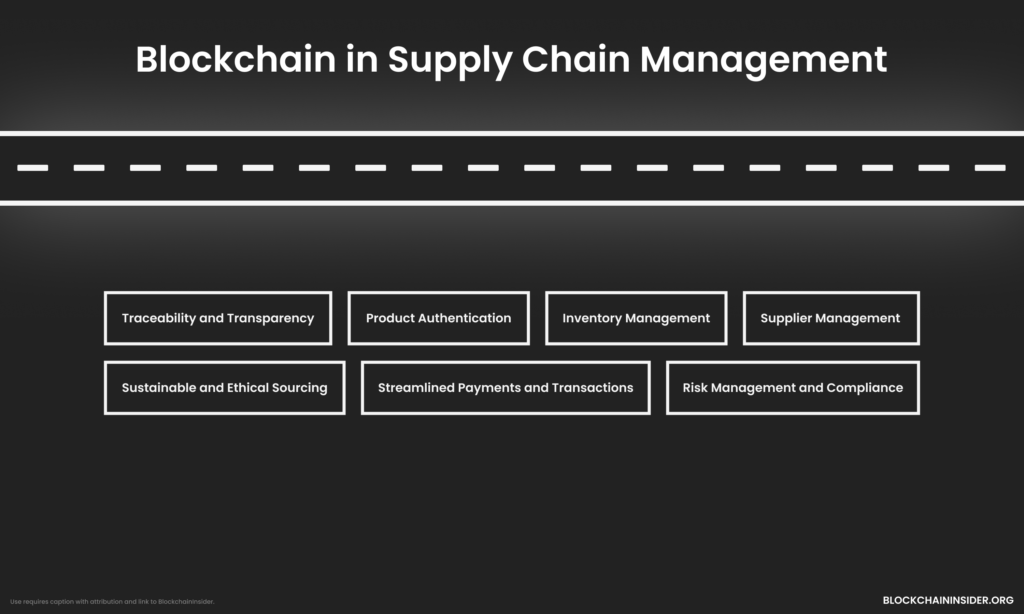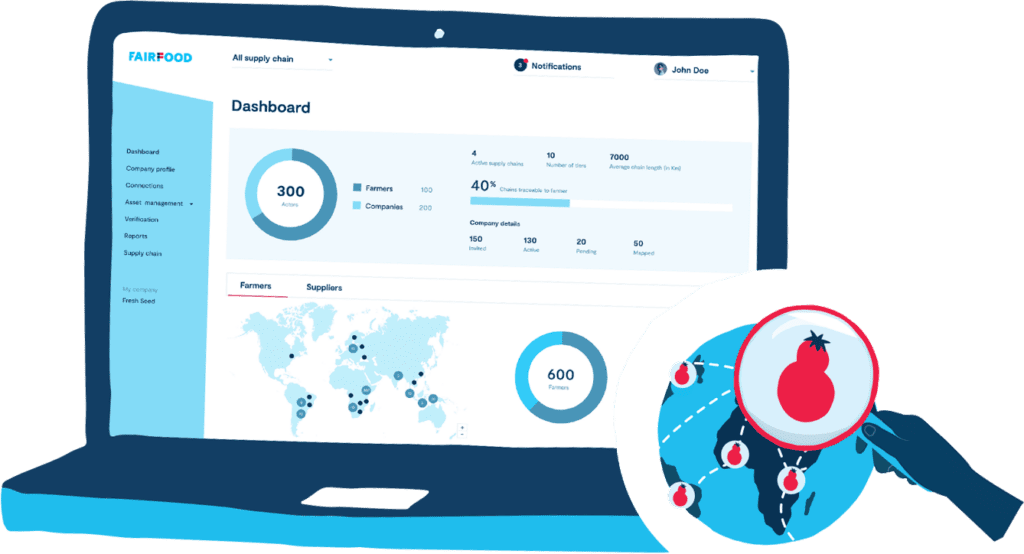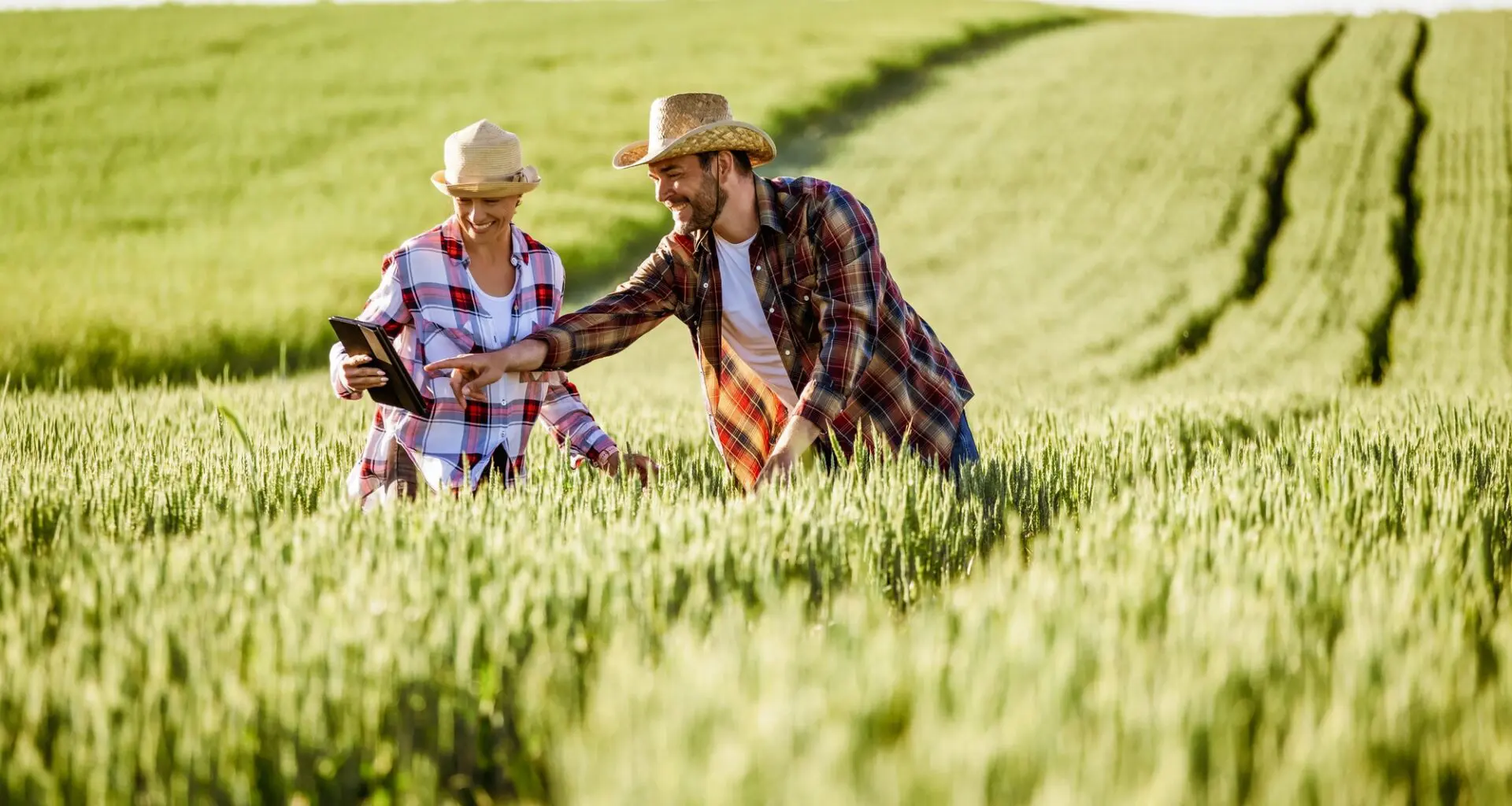Introduction
Imagine a world where you can trace your morning coffee beans back to the specific farm they were grown on, or verify the organic certification of your favorite vegetables with a few clicks on your phone. This level of transparency in the food supply chain is becoming increasingly possible thanks to blockchain technology.
This article explores how blockchain is revolutionizing the agricultural industry, from planting seeds to placing groceries on your table. We’ll look at the benefits of blockchain for both consumers and producers, explore real-life examples of its implementation, and discuss the challenges and future potential of this transformative technology.
What is Blockchain and How Does it Work in Agriculture?
Have you ever wondered exactly where your food comes from? While labels might tell you it’s “organic” or “locally sourced,” the journey a product takes from farm to table can be complex and often opaque. This lack of transparency can make it difficult for consumers to be confident about the safety and origin of their food.
Here’s where blockchain steps in. Imagine a digital record book, constantly updated and accessible to everyone involved. This is essentially what a blockchain is: a secure, distributed ledger that allows for transparent and tamper-proof tracking of information.
In the context of agriculture, each step in a food product’s journey can be recorded on the blockchain. This could include details like the type of seeds used, the fertilizers applied, the storage conditions during transportation, and even the final processing steps. Every participant in the supply chain, from farmers and distributors to retailers and consumers, can access and verify this information.
Let’s break it down further. Here’s a simple analogy: imagine a group project where everyone has their own copy of the same document. Any changes made are reflected in everyone’s copy simultaneously. This ensures everyone is on the same page and that the information can’t be altered without everyone noticing. In the blockchain world, this “document” is the record of a food product’s journey, and each participant has a secure copy.

In the next section, we’ll explore how this powerful technology translates into real benefits for both consumers and producers of food.
Benefits of Blockchain in Agriculture: Transparency Meets Empowerment
The potential benefits of blockchain in agriculture are vast and far-reaching. Let’s delve into some of the key ways this technology can transform the food system for the better.
Enhanced Food Safety and Traceability
One of the most significant advantages of blockchain is its ability to improve food safety and traceability. Imagine a scenario where a foodborne illness outbreak occurs. Traditionally, pinpointing the source of contamination can be a slow and laborious process. With blockchain, every step in the food’s journey is documented, allowing authorities to quickly identify the affected batch and isolate the problem. This rapid response can minimize the spread of contamination and ensure consumer safety.
For instance, in 2018, Walmart collaborated with IBM Food Trust on a pilot program using blockchain to track leafy green vegetables. The system allowed them to trace the origin of a product within seconds, significantly improving their response time in case of a potential recall.
Fairer Prices for Farmers
The agricultural sector is often plagued by inefficiencies and a lack of transparency, leading to a situation where farmers receive a relatively small portion of the final consumer price. Blockchain can disrupt this model by empowering farmers to connect directly with consumers, cutting out middlemen and increasing their profit margins.
Platforms like Fairfood OS utilize blockchain to connect farmers directly with retailers and consumers. Farmers can showcase their products and practices, while consumers gain access to high-quality, ethically sourced food while ensuring a fairer return goes directly to the producers.

Empowering Consumers
Consumers are increasingly demanding transparency about the food they eat. Blockchain empowers them to make informed choices by providing access to detailed information about a product’s origin, sustainability practices employed during production, and even the specific farm where it was grown. This level of transparency fosters trust and allows consumers to support brands and practices that align with their values.
In the next section, we’ll explore some real-world examples of how companies are already leveraging blockchain technology to revolutionize the agricultural industry.
Real-World Examples: Blockchain Sprouts Across the Food Chain
The theoretical benefits of blockchain in agriculture are exciting, but what does it look like in practice? Let’s explore a couple of real-world examples showcasing how companies are utilizing this technology to transform specific aspects of the food supply chain.
IBM Food Trust and Walmart’s Leafy Green Initiative
As mentioned earlier, Walmart partnered with IBM Food Trust to implement a blockchain-based system for tracking leafy green vegetables. This pilot program allowed them to trace the origin of a specific product from farm to store shelf in a matter of seconds. This not only improves efficiency but also significantly reduces the time it takes to identify and isolate potential contamination sources during a food safety scare.
Provenance: Building Trust Through Transparency
Provenance is a company that leverages blockchain technology to provide consumers with detailed information about the products they purchase. They partner with various food producers and retailers, allowing consumers to scan a QR code on a product and access its entire journey. This includes details like the farm where it was grown, the type of fertilizer used, and even the processing methods employed. This level of transparency empowers consumers to make informed choices and builds trust with the brands they support.
These are just two examples, but they highlight the diverse applications of blockchain across the agricultural sector. From ensuring food safety to empowering both producers and consumers, blockchain technology is making significant strides towards a more transparent and sustainable food system.
In the next section, we’ll discuss the challenges and future potential of blockchain in agriculture.
Challenges and Future Potential: Seeding the Future of Food
While blockchain offers a glimpse into a future of increased transparency and efficiency in agriculture, there are still challenges to overcome before it reaches its full potential.
Industry-Wide Adoption and Standardization
Currently, the use of blockchain in agriculture is fragmented, with various companies and organizations implementing their own systems. For widespread impact, industry-wide adoption and standardization of these technologies are crucial. Collaboration between different stakeholders, including farmers, distributors, retailers, and technology providers, is essential to establish common protocols and ensure seamless information sharing across the supply chain.
Data Privacy and Security Concerns
The secure nature of blockchain is a significant advantage, but it also raises concerns about data privacy. As more information is recorded on the blockchain, ensuring secure data access and management is paramount. Regulatory frameworks need to evolve alongside this technology to address these concerns and build trust among all participants.
Beyond Tracking: Smart Contracts and the Future
The potential of blockchain in agriculture extends far beyond simply tracking products. Smart contracts, self-executing agreements stored on the blockchain, have the potential to revolutionize financial transactions within the agricultural sector. Imagine a scenario where a farmer receives automatic payment upon delivery of their produce, verified through the blockchain record. This could improve cash flow for farmers and streamline financial processes within the supply chain.
Looking ahead, the future of blockchain in agriculture is brimming with possibilities. As the technology matures, we can expect to see even more innovative applications emerge. From automated payments to promoting sustainable farming practices, blockchain holds the key to a more secure, efficient, and equitable food system for all.
Conclusion
The potential of blockchain technology to transform the agricultural landscape is undeniable. By promoting transparency, efficiency, and fairness, blockchain can create a food system that benefits everyone from farmers to consumers.
While challenges like industry-wide adoption and data privacy concerns need to be addressed, the ongoing development of this technology is promising. As blockchain integrates more seamlessly into the agricultural sector, we can expect to see a future where:
- Consumers have complete confidence in the safety and origin of their food.
- Farmers receive fair compensation for their hard work and dedication.
- Food safety incidents are identified and addressed swiftly, minimizing risks to public health.
- Sustainable farming practices are incentivized and tracked for a healthier planet.
The journey towards a more transparent and trustworthy food system has begun. With continued innovation and collaboration, blockchain technology has the potential to cultivate a future where everyone can enjoy safe, ethically sourced food with complete peace of mind.









